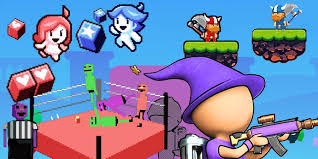Minecraft, a celebrated digital sandbox game, is renowned not only for its entertainment value but also for its significant cognitive benefits. Its unique gameplay mechanics and open-ended environment provide players with opportunities to enhance spatial awareness and strategic planning skills. This article explores how Minecraft contributes to these cognitive abilities, demonstrating its educational and developmental potential.
Enhancing Spatial Awareness Through Interactive Gameplay
Spatial awareness is a crucial cognitive skill involving the ability to understand and manipulate objects and spaces in three dimensions. minecraft gameplay offers a rich platform for developing this skill through its immersive and interactive environment.
Three-Dimensional Navigation: Minecraft’s block-based world requires players to navigate and interact with a 3D space. As players explore the game’s varied biomes, construct buildings, and delve into complex cave systems, they develop a heightened sense of spatial orientation. Understanding how objects and structures relate to one another in a three-dimensional space enhances players’ ability to visualize and manipulate spatial information.
Architectural Design and Construction: One of Minecraft’s core features is its building and construction system. Players are encouraged to design and create structures, from simple shelters to elaborate castles. This process involves planning and arranging blocks within a 3D space, fostering an understanding of spatial relationships and proportions. The game’s freedom in design allows players to experiment with different layouts and structures, reinforcing their spatial reasoning abilities.
Developing Strategic Planning Skills Through Game Mechanics
Strategic planning involves the ability to set goals, anticipate future scenarios, and devise effective strategies to achieve objectives. Minecraft’s gameplay encourages players to engage in strategic thinking through various interactive elements.
Resource Management: In Minecraft, players must gather and manage resources to build structures, craft tools, and survive in the game’s environment. This aspect of the game requires players to plan their resource use efficiently, balancing immediate needs with long-term goals. Strategic resource management involves evaluating different approaches, making decisions about resource allocation, and adapting strategies based on changing circumstances.
Project Planning and Execution: Minecraft’s open-ended nature allows players to embark on large-scale projects, such as constructing intricate buildings or creating complex redstone machines. These projects require careful planning and execution, as players must outline their objectives, devise a step-by-step plan, and monitor progress. The process of planning and executing projects enhances players’ ability to think strategically, anticipate potential challenges, and adjust their plans as needed.
Problem-Solving and Adaptation: The game’s dynamic environment presents various challenges that require players to adapt their strategies and solve problems creatively. Whether facing hostile mobs, navigating difficult terrain, or troubleshooting mechanical contraptions, players must devise effective solutions and adjust their approach based on real-time feedback. This problem-solving experience enhances strategic thinking and fosters cognitive flexibility.
Educational and Developmental Applications
Minecraft’s cognitive benefits extend beyond recreational play, offering valuable applications in educational and developmental contexts.
Curriculum Integration: Educators have increasingly recognized Minecraft’s potential as a tool for teaching spatial awareness and strategic planning. By incorporating the game into curricula, educators can provide students with hands-on experiences that reinforce academic concepts and cognitive skills. For example, students can use Minecraft to explore geometric principles, plan and execute projects, or analyze spatial relationships.
Skill Development: The cognitive skills developed through Minecraft’s gameplay are transferable to various real-world situations. Enhanced spatial awareness and strategic planning abilities support academic achievement, problem-solving, and everyday decision-making. The game’s emphasis on creativity and critical thinking prepares players for future challenges, equipping them with competencies applicable to diverse fields and disciplines.
Conclusion
Minecraft offers substantial cognitive benefits by enhancing spatial awareness and strategic planning through its interactive gameplay. Its three-dimensional navigation, architectural design, and strategic elements contribute to the development of these essential cognitive skills. The game’s integration into educational settings further amplifies its impact, providing a valuable platform for reinforcing academic concepts and fostering skill development. As a tool for cognitive growth, Minecraft demonstrates how digital games can effectively bridge the gap between entertainment and education, offering meaningful opportunities for cognitive and developmental advancement.
Unlocking the Cognitive Benefits of Minecraft: Boosting Spatial Awareness and Strategic Planning

Categories:


